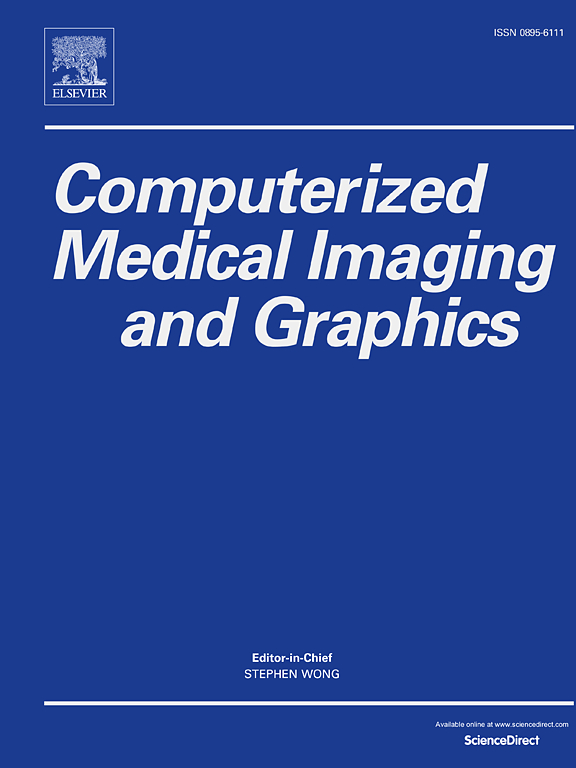Self-supervised multi-modal feature fusion for predicting early recurrence of hepatocellular carcinoma
IF 5.4
2区 医学
Q1 ENGINEERING, BIOMEDICAL
Computerized Medical Imaging and Graphics
Pub Date : 2024-11-14
DOI:10.1016/j.compmedimag.2024.102457
引用次数: 0
Abstract
Surgical resection stands as the primary treatment option for early-stage hepatocellular carcinoma (HCC) patients. Postoperative early recurrence (ER) is a significant factor contributing to the mortality of HCC patients. Therefore, accurately predicting the risk of ER after curative resection is crucial for clinical decision-making and improving patient prognosis. This study leverages a self-supervised multi-modal feature fusion approach, combining multi-phase MRI and clinical features, to predict ER of HCC. Specifically, we utilized attention mechanisms to suppress redundant features, enabling efficient extraction and fusion of multi-phase features. Through self-supervised learning (SSL), we pretrained an encoder on our dataset to extract more generalizable feature representations. Finally, we achieved effective multi-modal information fusion via attention modules. To enhance explainability, we employed Score-CAM to visualize the key regions influencing the model’s predictions. We evaluated the effectiveness of the proposed method on our dataset and found that predictions based on multi-phase feature fusion outperformed those based on single-phase features. Additionally, predictions based on multi-modal feature fusion were superior to those based on single-modal features.
预测肝细胞癌早期复发的自我监督多模态特征融合。
手术切除是早期肝细胞癌(HCC)患者的主要治疗方案。术后早期复发(ER)是导致 HCC 患者死亡的一个重要因素。因此,准确预测治愈性切除术后的早期复发风险对于临床决策和改善患者预后至关重要。本研究利用自监督多模态特征融合方法,结合多相磁共振成像和临床特征,预测 HCC 的 ER。具体来说,我们利用注意力机制抑制冗余特征,从而实现多相特征的高效提取和融合。通过自我监督学习(SSL),我们在数据集上预训练了编码器,以提取更具通用性的特征表征。最后,我们通过注意力模块实现了有效的多模态信息融合。为了提高可解释性,我们采用了 Score-CAM 来可视化影响模型预测的关键区域。我们在数据集上评估了所提方法的有效性,发现基于多相特征融合的预测结果优于基于单相特征的预测结果。此外,基于多模态特征融合的预测结果优于基于单模态特征的预测结果。
本文章由计算机程序翻译,如有差异,请以英文原文为准。
求助全文
约1分钟内获得全文
求助全文
来源期刊
CiteScore
10.70
自引率
3.50%
发文量
71
审稿时长
26 days
期刊介绍:
The purpose of the journal Computerized Medical Imaging and Graphics is to act as a source for the exchange of research results concerning algorithmic advances, development, and application of digital imaging in disease detection, diagnosis, intervention, prevention, precision medicine, and population health. Included in the journal will be articles on novel computerized imaging or visualization techniques, including artificial intelligence and machine learning, augmented reality for surgical planning and guidance, big biomedical data visualization, computer-aided diagnosis, computerized-robotic surgery, image-guided therapy, imaging scanning and reconstruction, mobile and tele-imaging, radiomics, and imaging integration and modeling with other information relevant to digital health. The types of biomedical imaging include: magnetic resonance, computed tomography, ultrasound, nuclear medicine, X-ray, microwave, optical and multi-photon microscopy, video and sensory imaging, and the convergence of biomedical images with other non-imaging datasets.

 求助内容:
求助内容: 应助结果提醒方式:
应助结果提醒方式:


